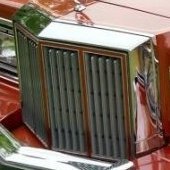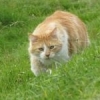For anyone interested, here is a basic primer on some of Google Earth's functions. My son introduced me to the program 13 years ago this month, shortly after we migrated from dial-up to broadband internet. Since then I have spent uncounted hours using Google Earth, including looking for our elusive bi-pedal primate. While I do use the mobile version of the app on my phone and tablet, it is much more limited in function and can be difficult to navigate at close range compared to the computer version. The following info is for the PC computer version, not sure if or how it may vary on a Mac.
A year of two ago, Google made the Pro version available for free to replace the standard version. To ensure you have the latest version, click the Help button in the menu bar and select about. The dialog box should match the following image, if it doesn't just go to the Google Earth home page in your browser and update to the latest version:
A quick way to determine if an object is a living creature or a landscape feature is to use the Historical Imagery tool; it is the small clock face icon with a green arrow wrapped around in a counter clockwise direction. To demonstrate I'm using an angled view of Yosemite Valley from about 2,000' above the valley floor. The first image is what shows without activating the function and is from 5/26/14. When you begin using this function you will notice, as in subsequent images, that the newest image may not be the one generally displayed when not using the historical imagery, which is generally the best of recent images. Also, for whatever reason, the views are sometimes out of order with a newer one showing up in an "older" spot on the slider, and sometimes the dates are inconsistent with the image, i.e. an image of a deciduous forest may appear with no leaves showing in an image dated in mid July, or vice-versa.
On all but one of these images, I'm using the Snip tool in Windows to save the images rather than the Save Image button second from the right in the tool bar above the image area in the program. The reason is so that all of the tools and information show, which they do not if using the Save Image button as below:
This will allow sharing a wider overview of an area without disclosing the actual latitude and longitude, which the OP has expressed a desire to keep confidential.
The following are some representative examples of the historical images for this location, though there are many more not shown, more than in less well known areas. Notice that the newest is from 2017, but is of poorer quality than the default 2014 image. The 2012 image, as well as the oldest image from 1987 are both monochrome:
The button fifth from the right is a ruler and opens a dialog box that allows measuring distances in miles or kilometers, or the size of smaller objects using meters, yards, feet, inches, etc. It allows straight line and path measuring, as well as some geometric functions I haven't explored:
The next image shows a random line measured across the valley floor in feet; note that the result is shown in Map length (point to point), Ground length (accounting for terrain covered) as well as the compass heading of the line:
There is an option for saving the measurements which allows the line color, width and transparency to be adjusted. Using the push pin icon in the toolbar allows a location to be saved in the same way. The next two images show the dialog boxes for identifying the location and setting the color of the marker pin and the legend appearing on the screen. You can also change the color of the pin or even select a different icon as I did with the tent icon in the second image. Note on the bar to the left of the image area, there is a box for Places. The last entry now shows the location I just saved highlighted in blue. While I have over a hundred saved locations and paths, they only show up in the image area if the box to the left of the item is checked. Things would be pretty crowded on my screen in some areas if all of the saved locations and paths were showing at the same time.
The last item I'll cover is the Photorealistic 3D option (this is also available in the mobile version though the operation is a bit different). This option is relatively recent and new areas are added all the time. The 3-D images are created in a separate operation. The area selected is overflown in a grid pattern by a specially equipped aircraft using eight Hi Def cameras each pointing down at a different angle. The images are compiled by computer algorithm and are pretty spectacular (there is a youtube video explaining the process but you'll have to find it on your own). The option is selected in the Layers section at the bottom of the left hand sidebar. The next image shows the same area in Photorealistic 3-D:
Hope this is useful. There are many functions I've never used in Google Earth, but if anyone has questions I'll try to answer.



